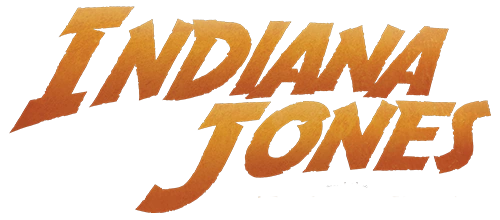The Indycron continuity database is an internal database used by Lucasfilm which covers all forms of licensed Indiana Jones media. It is maintained by Leland Chee, who is also keeper of the Star Wars Holocron.
Says Chee, "We try to make things as consistent as possible so Indy doesn't get his hat twice or be introduced to Wu Han or Marcus Brody twice. We track things like when Indy was born, where and when he went to high school, when and where he got his college degrees, where he teaches and when, what kind of pistols does Indy use, what languages does Indy speak, and other things like that."[1]
In an interview with TheRaider.net in April 2010, Chee stated that only areas off-limits to writers are Marion Ravenwood's life between Raiders of the Lost Ark and Indiana Jones and the Kingdom of the Crystal Skull, and Colin Williams.[2]
Canon system
According to Leland Chee, the Indiana Jones canon hierarchy is organized as follows, relative to the Star Wars canon hierarchy:[1]
- G canon was George Lucas Canon; In the Star Wars canon system, it included all the films released by that time, which were the all three movies of the prequel and original trilogies. Given this, it can be deduced that all four Indiana Jones films–Raiders of the Lost Ark, Indiana Jones and the Temple of Doom, Indiana Jones and the Last Crusade and Indiana Jones and the Kingdom of the Crystal Skull–released between 1981 and 2008 were considered G canon. The novelizations and reference books were too considered G-canon though original material by author was deemed C canon.
- T canon was Television Canon; It comprised all the episodes of The Young Indiana Jones Chronicles television series which aired from 1992 to 1993. It could be assumed that comic book or novel adaptations of such episodes were considered T canon too.
- C and S canon was Licensing Canon, or known too as Continuity Canon or Secondary Canon; It consisted in all other works books, comics, video games and more.
- N Canon was Non-Canon; It comprised any material which contradicted previously established elements introduced in higher canon. N was the only level that was not considered canon by Lucasfilm Ltd.. Among non-canon entries were included the comic book story Into the Great Unknown, the TV special LEGO Indiana Jones and the Raiders of the Lost Brick or original characters created by the LEGO video games. Information cut from canon, such as the unproduced episodes of The Young Indiana Jones Chronicles have been considered non-canon too until some canon source referenced some of them.
Each entry to the Indycron is categorized into one of the following:
- Movie
- TV
- Licensing
- Non-Continuity
- Non-Fiction
Despite this, there have been instances where information in a higher-tier source has been superceded by that from a lower source. For example, the illness that took the life of Indiana Jones's mother Anna was stated to be scarlet fever in 1994's The World of Indiana Jones, a "Licensing" source. However, footage shot in 1999 for the "TV" canon Spring Break Adventure sees Jones state that his mother died from influenza. Chee has said that Anna died from scarlet fever nevertheless.[1]
With the release The Diaries of Indiana Jones, which dated the events of the four theatrical movies down to the day, Chee revealed on his Facebook page on August 6, 2012 that the dates had become the official ones used. This information sets the movies on:[3]
- Aug. 5, 1912: Indiana Jones and the Last Crusade prologue
- Jun. 13, 1935 — Jun. 22, 1935: Indiana Jones and the Temple of Doom
- Sep. 7, 1936 — Oct. 7, 1936: Raiders of the Lost Ark
- Jun. 2, 1938 — Jun. 26, 1938: Indiana Jones and the Last Crusade
- Aug. 30, 1957 — Oct. 19, 1957: Indiana Jones and the Kingdom of the Crystal Skull
On April 25, 2014 StarWars.com announced that — in light of production of new Star Wars films — the Expanded Universe was to cease telling new stories and be replaced with a new approach to spin-off material which brought about the end of that franchise's continuity heirarchy system.[4] Whether a similar restructuring will occur, or already has taken place, for the Indiana Jones' Expanded Adventures has yet to be revealed.[4] On September 29, 2018, Lucasfilm Story Group's Matt Martin revealed on his Twitter account that while the Star Wars canon hierarchy system is no longer used, the fate of the Indiana Jones canon hierarchy system has yet to be decided due no new Indy stories have been published since the Disney acquisition in 2013.[5]
Notes and references
- ↑ 1.0 1.1 1.2 Indycron continuity database questions (Web archive)
- ↑ Leland Chee interview at TheRaider.net
- ↑ Keeper of the Holocron on Facebook
- ↑ 4.0 4.1
The Legendary Star Wars Expanded Universe Turns a New Page on StarWars.com (backup link on Archive.org)
- ↑ @missingwords Matt Martin on Twitter
External links
- Introducing... Leland Chee at The Official Star Wars Blog
- "What is the Indycron?" from Leland Chee's blog (web archive)
- Indycron continuity database questions - thread at the StarWars.com message boards (web archive)
- Leland Chee interview at TheRaider.net
